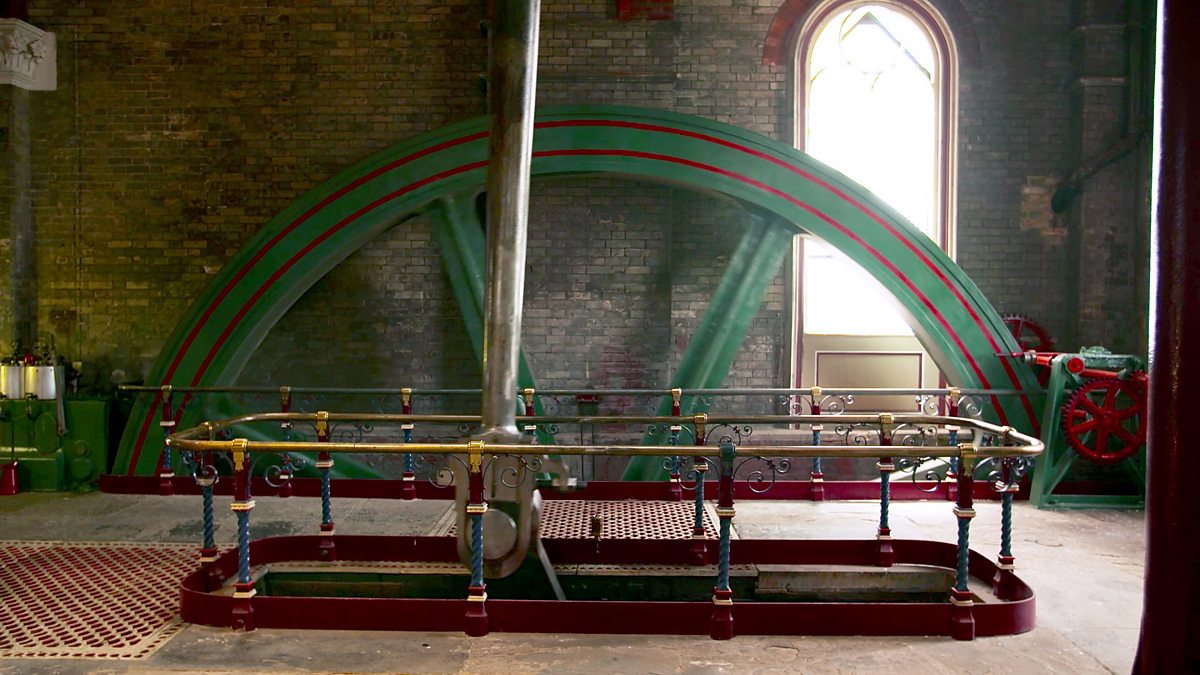- Messages
- 895
The Answer !
It is the CROSSNESS PUMPING STATION. [ A sewage pumping station ]
London in the mid-1800's was hit with several severe cholera
outbreaks in which thousands of people died. They didn't
know that it was spread by the filthy water of the Thames.
Sewage was dumped into the Thames and in the streets and canals
which flowed into the Thames until it became a quagmire
of disease and pollution.
One doctor realized that Cholera was a waterbourne disease
and several proposals were made by the engineer Joseph
Bazalgette to build a sewer system,
Parliament did not act until 1858 when the abnormally
high temperatures caused the smell to become overwhelming
and London became known as 'The Great Stink'
Joseph Bazalgette designed the extensive sewer system which
consisted of miles of tunnels both north and south of the Thames
which were design to intercept sewage before it reached the Thames
and direct it further out to pumping stations and reservoirs from which
it would be released during the ebb tide to flow out to sea.
The Crossness Pumping Station pumped the sewage up into
a 25 million gallon reservoir . It was opened in 1865
and has 4 steam powered beam engine pumps. [ one of which has been restored
and is probably the largest operating rotative beam engine pump in the world.]
Each was named after a different member of the Royal family.
It has not been used for several decades now but has been
named a heritage building and restoration has been ongoing
It is now open to the public
One of the enormous pumps the ' Prince Consort ' is fully restored and
has regular 'in steam' days when they fire it up !
- very impressive to watch - see video.
Another video from BBC 'Mechanical Monsters'

 www.bbc.co.uk
www.bbc.co.uk
I haven't discovered who did the beautiful sculpted iron work,
capitals and general architecture yet.
It was given several 'nicknames' over the years.
eg: The 'Cistern Chapel' and the 'Sewage Cathedral'
Cheers,
Patricia
The Prince Consort beam and wheel

Joseph Bazalgette's face on the capitals

The exterior . The tower was demolished when the building
was no longer used




It is the CROSSNESS PUMPING STATION. [ A sewage pumping station ]
London in the mid-1800's was hit with several severe cholera
outbreaks in which thousands of people died. They didn't
know that it was spread by the filthy water of the Thames.
Sewage was dumped into the Thames and in the streets and canals
which flowed into the Thames until it became a quagmire
of disease and pollution.
One doctor realized that Cholera was a waterbourne disease
and several proposals were made by the engineer Joseph
Bazalgette to build a sewer system,
Parliament did not act until 1858 when the abnormally
high temperatures caused the smell to become overwhelming
and London became known as 'The Great Stink'
Joseph Bazalgette designed the extensive sewer system which
consisted of miles of tunnels both north and south of the Thames
which were design to intercept sewage before it reached the Thames
and direct it further out to pumping stations and reservoirs from which
it would be released during the ebb tide to flow out to sea.
The Crossness Pumping Station pumped the sewage up into
a 25 million gallon reservoir . It was opened in 1865
and has 4 steam powered beam engine pumps. [ one of which has been restored
and is probably the largest operating rotative beam engine pump in the world.]
Each was named after a different member of the Royal family.
It has not been used for several decades now but has been
named a heritage building and restoration has been ongoing
It is now open to the public
One of the enormous pumps the ' Prince Consort ' is fully restored and
has regular 'in steam' days when they fire it up !
- very impressive to watch - see video.
Another video from BBC 'Mechanical Monsters'

BBC Four - Mechanical Monsters, Crossness Pumping Station contains one of the engineering wonders of the 19th century
Giant steam pumps, used to take sewage out of London and improve people’s hygiene.
I haven't discovered who did the beautiful sculpted iron work,
capitals and general architecture yet.
It was given several 'nicknames' over the years.
eg: The 'Cistern Chapel' and the 'Sewage Cathedral'
Cheers,
Patricia
The Prince Consort beam and wheel
Joseph Bazalgette's face on the capitals
The exterior . The tower was demolished when the building
was no longer used
Last edited:


